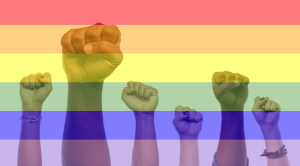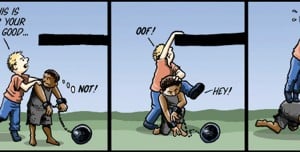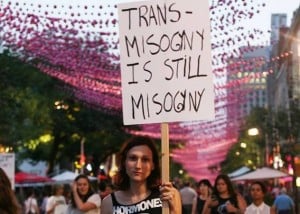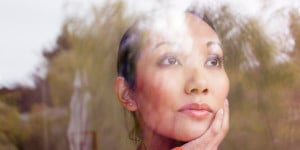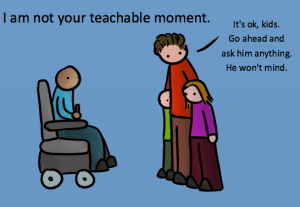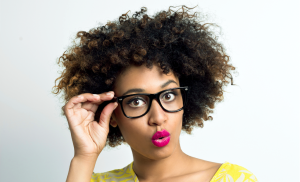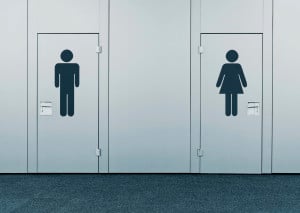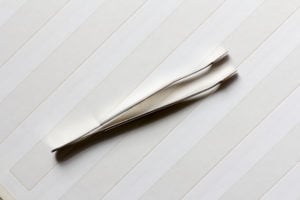
Source: Getty Images
I’ve never had my eyebrows shaped, plucked, threaded, waxed, filled in, tinted, drawn on, or otherwise groomed.
And I’m okay with that.
More than okay – I’m downright happy with it. It’s other people who seem to have the problem.
Every time I enter a nail salon, overeager operators ask if they can do my brows before I sit down or offer one with my mani-pedi.
I get it: They’re up selling, and I don’t blame them. Brows are big business (up to $122 million annually in products in the United States alone, according to NPD global research group), and the nail industry flourishes on low-wage work.
But one look at my eyebrows, and they assume that’s why I’m there. Because who would want my irregular, peaked brows?
They look surprised – and sometimes even disdainful or pitying – when I decline their ministrations. Or they look disappointed that we will not be co-combatants in this battle of nail salon versus nature.
I say, “No.” Firmly. And, then, “I like my eyebrows like this.” End of conversation.
But it’s a conversation I keep rehashing with solicitous friends who tell me I really “should” get my eyebrows done or share their stories of an eyebrow magician who cuts down shrubby eyebrows for a pittance.
It’s cosmetic coercion, the idea that one “must” follow the trend just as surely as that threader follows the arch of a brow. Though I know that preferences and fashion don’t develop in a vacuum, I’m suspicious of a beauty playbook that I didn’t write and its rules: no white before Labor Day, no flats if you want to be sexy, no body-hugging dresses if you’re not rail-thin, and no sandals without pedicure or polish.
Too many of these rules apply to women and our hair – and the hair on our faces. Sideburns and mustaches, no. There’s a reason why bearded ladies were a routine feature in circus “freak shows.”
Certainly, no impudent chin hair or peach fuzz unless you want to be mistaken for a crone or a woman too far gone to wield tweezers. But an emphatic yes to keeping up your eyebrows and keeping them in high style.
Having the “it” brow of the moment demands support of a beauty industry that tells women we must design our appearances down to the finest hair.
If I lived my life according to the imperatives of women’s magazines – and their frequent exhortations on brow upkeep – I would find myself guilty of gross neglect.
Since the beginning of 2016, Elle.com has published at least six different eyebrow tutorials: shaping tips from a “brow guru”; eight steps to filling in if you weren’t born with the “perfect pair”; the Cara Delevinge-esque makeover for us thick girls; and a feature about what celebrities look like without their brows.
(I will never think of Zac Effron or Drake the same way again, and everybody’s favorite no-dancing, in-his-feelings Canadian rapper got a whole ’nother article about his barely noticeable – to me – brow evolution. I will leave it to brow aficionados to demur.)
But even more than that, at least one Marie Claire article prescribed the appropriate regimen for every woman. The list goes like this: shaping every three to four weeks; tweezing every two or three days to “keep things tidy”; threading/waxing, also every three to four weeks; trimming, once a month; tinting, every four to six weeks, based on how speedily the hairs grow back; and growth treatments from castor oil to Rogaine, as needed or instructed.
Here’s the crux of my objection to the beauty regime that insists on the manicured brow: It’s an endless cycle of care and cost.
Much like chemically straightening my hair and getting regular touchups to tame the “new growth” (which I no longer do either), a commitment to the acceptably symmetrical and balanced brow requires work that I’m just not willing to do.
I’m not interested in fighting hairs that grow outside a cosmetologist’s approved route. For me, it’s an expensive and unnecessary proposition – not to mention painful and short-lived. We know those wayward hairs will grow back, however they want and whenever they want.
It was painful to watch a college roommate enact her Saturday brow-taming ritual. She’d rise early, soften noxious-smelling wax in my microwave, and slather it on the middle of her forehead. She’d grimace and pull the hardening substance away from her skin, taking with it the offending hairs that united her two brows into one. She’d turn, review her face in the mirror, and talk about how hard it was to be a hairy immigrant girl from the Middle East.
Truth be told, I didn’t like her much (or her zapping hair wax in my microwave). But I felt real sympathy as she struggled to maintain an appropriately haired visage. For her, having the right bilateral brow was a way to erase her otherness, and maybe – just maybe – pass into whiteness.
“How many Americans girls have unibrows?” she’d ask. And by American, she meant white. And that telltale single line across her forehead barred her from passing into whiteness or approximating something close to it. And that eyebrow line might as well have been a color line because she believed it kept her from finding a suitable white mate. And maybe it did.
Passing into whiteness via brow modification was never an option for me as a Black woman – a visibly Black woman who politically and socially identifies as Black.
Nevertheless, I don’t bow down to the brow orthodoxy that says “one shape fits all” or requires a full calendar of appointments and almost daily “face-chores.”
And, simply put, I don’t subscribe to all the must-do maintenance babble because I like my brows as they are. I wish this didn’t feel like a revolutionary thing to say. I like what I like, even when my preferences run contrary to fashion. All women must be able to like what they like about their physicality.
At least, we should be able to choose that sculptural brow or the fuzzy caterpillar look we were born with, or whether we follow the mandates of trend. Which is not to say that following trends indicates an unthinking devotion to herd-think, but rather we must feel able to select what trends we follow, when we break with them, and how much we are willing to do for aesthetic belonging.
In fact, I love my eyebrows – as unfashionably pointy as they are – for another type of belonging. Funny as it may sound, my eyebrows are a bridge to my family.
They are the only visible facial feature I inherited from my father. I cock them just like he does – to question, to express disbelief, to show surprise – and lower them the same way he does in shade, concentration, or disapproval. My friends and family probably wouldn’t be able to read my emotions without my expressive eyebrows. My eyebrows are punctuation for my glasses and my face.
My brows aren’t uniformly full – the hair thins after the pointy part. What others see as a brow failing, I see as adding “visual interest” to my face. I don’t want the uniform, slender elegant arch that’s supposed to be every woman’s aspiration (unless you have a hankering for the “sensual” Brooke Shields-style brow or want to wait until the thick brow cycles back through popularity like bell bottoms and platform shoes).
Admittedly, I’m not like many American women. I keep my makeup to a minimum. I wear a neutral lip-gloss for the everyday and a bold lip every now and then. Eyeshadow is for special occasions. There is never an occasion special enough for foundation; my skin needs to breathe, and my Black has not yet cracked (melanin is a superb moisturizer, I hear).
I want my “natural” hair to be just that: natural and not coated in products that promise to yield that seemingly effortless 3-B curl pattern. I don’t pull out the gray strands that are making their presence known in a sea of darker hair.
Defining my own sense of natural brow and beauty is swimming upstream.
But Mexican painter Frieda Kahlo bucked the culture with her hirsute monobrow – she didn’t edit it out of her self-portraits. Feminist theorist and poet Audre Lorde had a jagged brow like mine. It’s not a coincidence that these feminist icons had free-wheeling brows.
Letting my eyebrows grow “wild” is too often seen as a sign – by other woman – that I’m letting myself go. I don’t judge women who love the artifice and creativity of makeup, the ability to remake themselves in front of mirrors. More power to them. But I’m letting go of this specific beauty standard that tells me my brows must be these graceful, flattened parabolas on my face.
So these brows are going to remain the way they are: free from teasing and manipulation. I won’t be brow-beaten into changing them.
[do_widget id=’text-101′]
Dr. Cynthia R. Greenlee is a historian, resident of the semi-tropics, a journalist, and a foodie who is so obsessed with her stand mixer that she barely uses it. She’s also the senior editor at Rewire News and a proud consumer of reality TV (so don’t call it a guilty pleasure). Follow her @CynthiaGreenlee.
Search our 3000+ articles!
Read our articles about:
Our online racial justice training
Used by hundreds of universities, non-profits, and businesses.
Click to learn more






